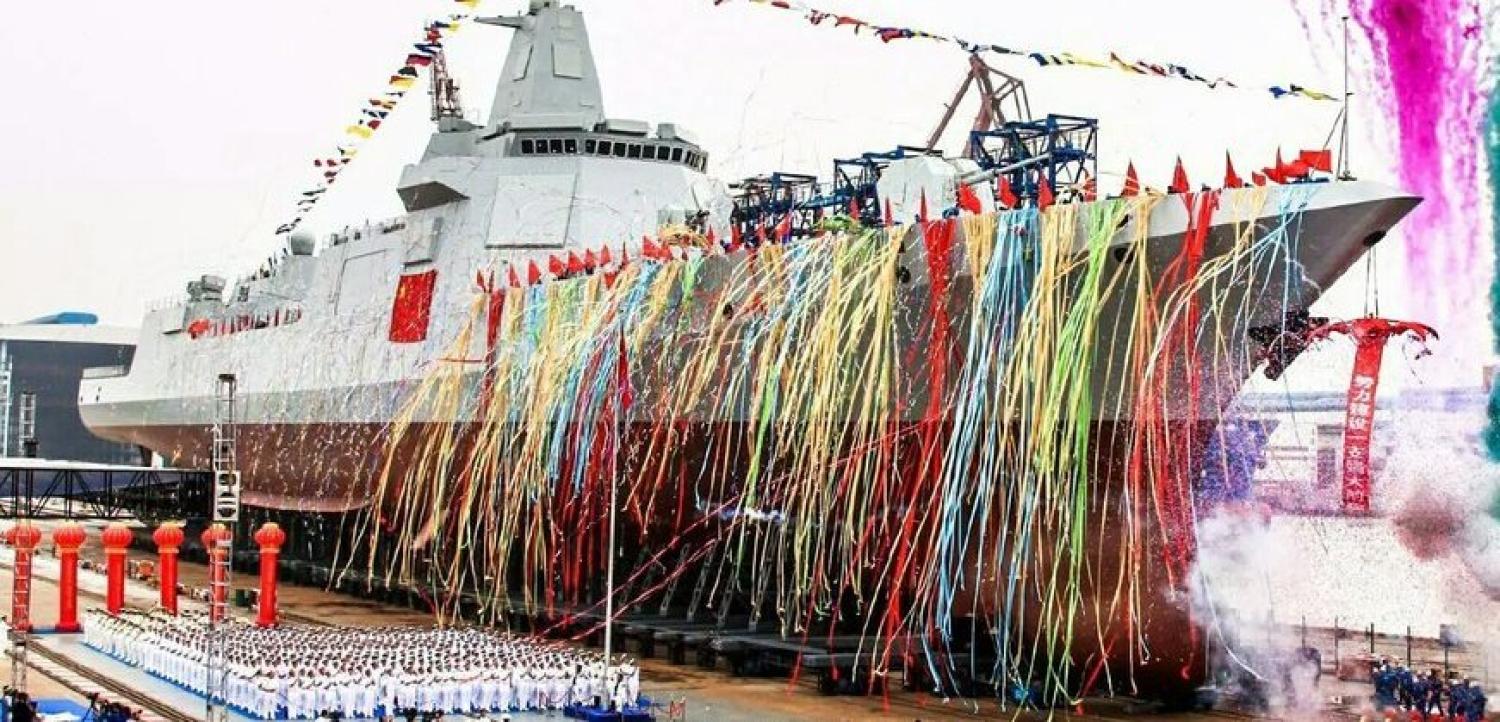Last Wednesday the People’s Liberation Army-Navy launched the first of its new air warfare ships, designated the Type 055 destroyer. At approximately 10,000 tons displacement and 180m in length, this is not a small ship, and for good reason. It is intended to provide the air defence for an aircraft-carrier task force.
To do that, the Type 055 needs to carry not only a full suite of sensors - notably phased array radars in multiple bands for the long-range detection, tracking and engagement of hostile aircraft and anti-ship missiles - but sufficient weaponry to meet multiple massed attacks. In the case of the Type 055, this means well over 100 cells for vertically launched missiles (the RAN’s Hobart class destroyers have 48, although some are quad-packs for the Evolved Sea Sparrow missile). It also needs to have the command and control capabilities to coordinate the air defence effort of other ships and the aircraft hosted by the carrier. This requires excellent communications and battle management systems, and quite a few people.
While the Type 055 is being compared with the American Burke-class guided missile destroyer, its key role as air defence command ship for a task force makes it more comparable with the US Ticonderoga-class cruiser. And this is what the Type 055 is - a cruiser, the key node of a future PLA Navy carrier battle group.
The Type 055 is one component of the Chinese drive to create aircraft-carrier task forces which are capable of regional and even global operations.
The various building blocks are being put in place for a program that will take a decade or more to bring to fruition. Type 052 guided missile destroyers are already in series production. The first Chinese-built aircraft carrier, albeit a derivative of the Liaoning, an ex-Soviet vessel, was launched in April. Larger and more capable carriers will follow and they will probably have some type of catapult, allowing the use of heavier aircraft with bigger combat loads than Liaoning can deploy. Almost as important, China is building additional replenishment ships to sustain the combatant units at sea with ship and aviation fuel, ammunition and food. Eight of the 23,000 ton 903 and 903A tankers are now in commission, and larger and even more capable ‘one stop’ replenishment units will follow.
These task forces are more a strategic challenge to the US than a military one. They are complementary to China’s anti-access area denial (A2AD) program rather than integral to it. The PLA Navy does not intend that its carriers steam to do battle with the US Navy in the central Pacific in a high-technology restaging of the Battle of Midway. The PLA Navy’s carrier groups will instead provide China with a capability to exert influence and apply force not only in East Asia but in the Indian Ocean and even further afield. As such, they will signal to the rest of the world that China is a great power and that it has capabilities equivalent to the US, capabilities that it is willing to use.
Herein lies the strategic challenge for the Americans. It is an alternative narrative for the maritime domain that has not been heard since the temporary rise of the Soviet Navy in the 1970s, one that may be heard in future decades in many parts of the world. A China which has long been irritated by the appearance of American carrier groups on the East Asia periphery might well enjoy dispatching a task force to cruise the Caribbean and the coasts of central America. It will certainly deploy its carrier groups to South East Asia, the Indian Ocean and Africa.
Are there gaps in the Chinese effort? Anti-submarine warfare remains an area of profound weakness, although there can be no doubt that the PLA Navy is working hard to improve. The carrier capability has a very long way to go. Liaoning does not yet host a balanced air group with the necessary aerial early warning, electronic warfare or anti-submarine aircraft. Bringing the whole task force effort together in a way that creates a protective ‘gap-free’ umbrella of awareness and weaponry for air, surface and sub-surface defence will not be easy. The PLA Navy will certainly use every possible means, legitimate and covert, to understand how the US Navy does this, but it must in the end develop the necessary doctrine and practical expertise itself.
Could the program be halted? Despite the growing influence and prestige of the PLA Navy within China, the development of aircraft-carrier task forces remains dependent on the Chinese economy continuing to prosper. If significant reductions – or even a markedly reduced rate of growth – are ever imposed on defence spending, the land defence of China and the maritime A2AD effort will be the priority. Submarines and missiles remain more important for China’s defence than aircraft carriers.
Photo courtesy of Wikipedia.

